Chengdu, the capital of Sichuan Province in southwest China, is a city that is a walking testament to a blend between history and modernity. It’s famous not only for being the home to the Giant Panda but also for being the birthplace of Sichuan cuisine, which brings an unparalleled cultural and culinary experience to its visitors. In this complete 2025 itinerary, I have chronicled the best things to do in Chengdu, from visiting prominent sites and landmarks to some less popular but astonishing places within the city. From history buffs to food enthusiasts or anyone in between who’s looking to know Chengdu better, this guide lays out the most effective ways for you to spend your time while in Chengdu. This ‘Chengdu In One Day’ itinerary will help travelers savor the city’s depth, allowing them to experience its charm irrespective of their preferences.
What Are the Must-See Attractions in Chengdu?
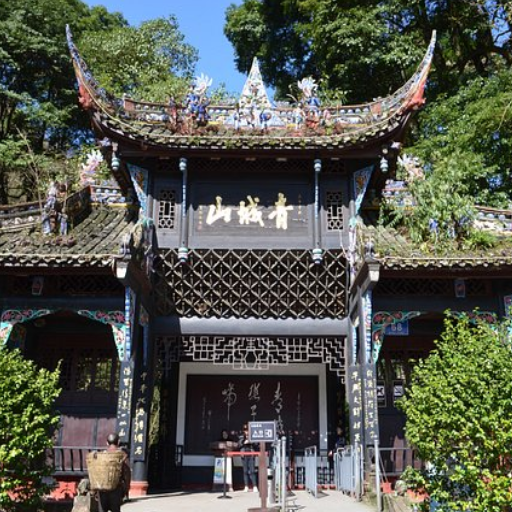
Explore the Chengdu Research Base of Giant Panda Breeding
Regarded as one of the most famous places in Chengdu, the Chengdu Research Base of Giant Panda Breeding allows guests to China’s prized giant pandas in a reasonably natural setting. This facility is located 10 kilometers from the city center of Chengdu, covering over 100 hectares and having several enclosures that simulate the natural environment of pandas. The base is involved in giant panda conservation, breeding, scientific research, and public education. Interactive assemblies allow guests to learn about panda biology and behavior, witness feeding time, and see baby pandas in the nursery. The facility is best visited in the early morning because pandas are most active.
Visit the Leshan Giant Buddha
A UNESCO World Heritage site, the Leshan Giant Buddha is a stone statue roughly 71 meters tall carved on a cliff where the Qingyi, Min, and Dadu rivers meet. The statue was built between 713 to 803 AD during the Tang Dynasty and is currently known as the tallest Buddha in the world. Its construction is also an engineering marvel. Tourists can enjoy breathtaking views of the statue as well as the surrounding nature from boats on the river, and for more detailed views of the statue, there are many staircases to climb. Most tourist crowds occur during the peak weekends and holidays, so advanced planning is always necessary.
Visit the Wuhou Temple
The Wuhou Temple is located in a monument dedicated to Zhuge Liang, the chancellor and an outstanding strategist of the Shu Han empire during the Three Kingdoms period. Chengdu is now famous for its Wuhou Temple, which, unlike Zhuge Liang’s memorial, is more expansive and features various memorable halls, archeological sculptures, and manicured parks. Visitors can appreciate the Temple of Liu Bei, walk through the peaceful bamboo grove, and discover the history of the Three Kingdoms from exciting exhibits. Moreover, the tranquillity and the elaborate designs of the architecture make it a perfect place for history buffs and cultural tourists. It is best to visit during the workweek to absorb the atmosphere fully.
How Can I Plan a Chengdu Itinerary?
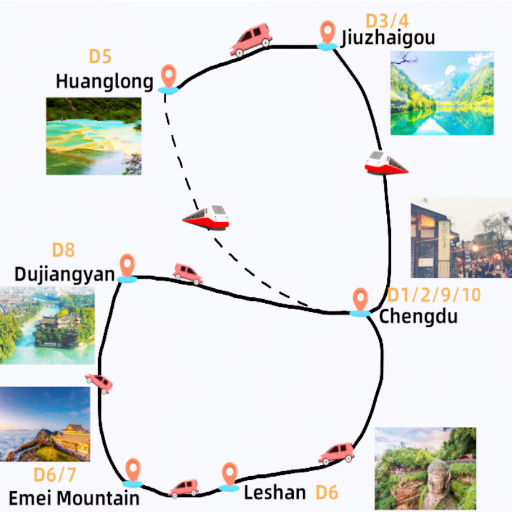
One-Day Itinerary for Chengdu
This itinerary suggests a day plan in Chengdu that includes visiting historical places, immersing in cultural activities, and eating signature dishes of the province. Chengdu Renowned Panda Center should be your first stop. You may witness the world-famous Pandas in their natural habitat. try famous Sichuan dishes and feel the spirit of the ancient marketplace. To end the day, you can go to Kuanzhai Alley (Wide and Narrow Alley) where old tea houses and Shulung performances create a unique place to enjoy Qing Dynasty culture mixed with Chengdu’s modern character.
Chengdu Attractions Over Two Days
Commence the Chengdu trip by visiting the Chengdu Research Base of Giant Panda Breeding first thing in the morning. This site, one of the top Zhou Cheng sites, is open to the public worldwide. After this, proceed to Wuhou Shrine, an exquisite historic site focused on the heritage of the Three Kingdoms period. It is surrounded by calm gardens that are ideal for rest.
Focus on absorbing Chengdu’s food culture through its traditional snacks and lively street food at Kuanzhai Alley during lunch. Afterward, go to the memorial site Du Fu Thatched Cottage, dedicated to the famous Tang dynasty poet Du Fu. The location offers excellent picturesque settings perfect for some deep reflection. Conclude the trip by a casual stroll through People’s Park, a centerpiece for Sichuanese local activities such as tea drinking, tai chi, and Sichuan opera. This itinerary is the best balance between deep culture and natural beauty, with a holistic Chengdu experience.
Most Ideal Visit Duration for Chengdu Sightseeing
As far as Chengdu is concerned, March to June and September to November are the ideal months to enjoy sightseeing. The weather is warm and dry during these months, with less precipitation than the summer months. Blooming flowers are visible during Qingcheng Mountain and Dujiangyan scenic sites in spring while clear sky and colorful leaves characterize autumn. Summer peak tourist season is sidelined during these periods, which lets tourists efficiently appreciate Chengdu’s distinct culture and geography.
What Food Should I Try While in Chengdu?
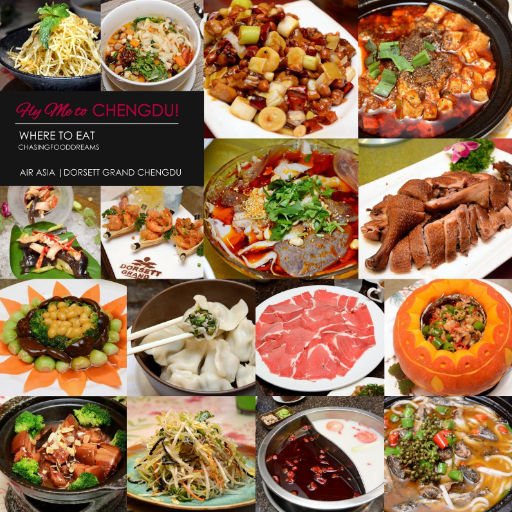
Authentic Sichuan Chinese Cuisine
Famous for Sichuan cuisine’s bold taste, range of ingredients, and the signature addition of Sichuan pepper, Chengdu is popular worldwide as the home of Sichuan cuisine. Certain dishes are must-trys, including Mapo Tofu, Kung Pao Chicken, and Sichuan Hot Pot, all of which need no introduction. Famous local specialties like Dan Dan Noodles and Twice Cooked Pork also marvelously showcase the region’s masterful blend of spicy, savory, and umami flavors. Every dish is a Chengdu masterpiece and provides an unforgettable experience.
Savor the Taste of Chengdu Hotpot
Apart from Chengdu’s landmarks, Chengdu hotpot is another Sichuan treasure. It is a dish with rich traditions and has earned its reputation for the hot, peppery tastes Sichuan is well-known for. The centerpiece of Chengdu’s hotpot dish is the broth, which must be boiled seasoning with Sichuan peppercorn, oil of chili, and an elaborate mix of spices. Chengdu hotpot is served with various raw ingredients from which the diners can choose thinly cut meat, fresh vegetables, seafood, and tofu, which is then added to the broth, which is boiling on the table. Everybody can adjust the dish perfectly to her liking. A hot pot restaurant usually has several varieties of spices and sauces for customers, making the hot pot their own. The focus of this hotpot feast is not only the dining itself but also the gathering of people showcasing the trademark Chengdu hospitality and cuisine, which has impressive tastes and terrific skill behind its food crafting.
Local Chengdu Cuisine Highlights
- The Magic of Chengdu Mapo Tofu: Chengdu is famous for so many things, but a staple, Mapo Tofu with silky tofu drowned in spicy ground beef or pork gravy with broad bean paste, chilies and mouth-numbing Sichuan peppercorn sauce is perhaps the most famous dish of Chengdu rich in spicy hot flavor which is balanced by layers of flavor.
- Kung Pao Chicken: This dish is synonymous with sweet, sour, and spice, all combined perfectly. It consists of stir-fried chicken, dried chilies, peanuts, and a tangy sauce. Because of its flavors and texture, it is a people’s favorite.
- Twice-Cooked Pork (Hui Guo Rou): It’s a hallmark dish of the Sichuan king, and his specialty includes first boiling the pork belly and then frying it with bean paste, leek, and peppers. The dish is spicy and savory balanced perfectly with a tender and slightly crunchy palm.
Such meals capture Chengdu’s unique food culture and splendid mastery of the tasting world.
What Cultural Experiences Are Available in Chengdu?
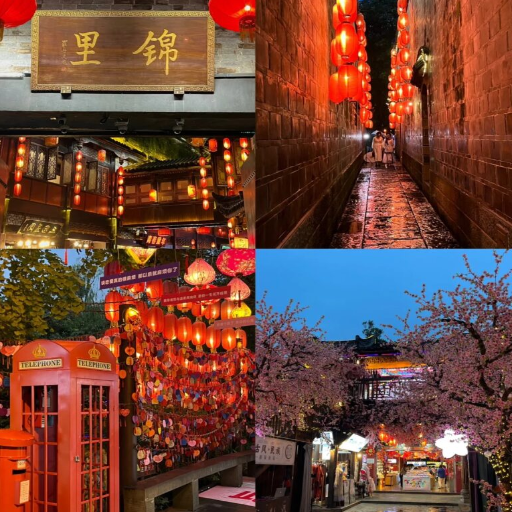
Watch a Sichuan Opera Performance
Watching a Sichuan Opera in Chengdu is an exceptional cultural activity that emphasizes the area’s artistic legacy. The Opera is famous for its fusion of music, dance, and drama. One of the best-known aspects of the performance is “face-changing” (Bian Lian), a vibrating of the mask skillfully done by the performer. Many shows usually include instruments, costumes, and strong lighting effects to make it more spectacular. The Shufeng Yayun Teahouse and Jinjiang Theater are some venues where this ethnic art is presented. Customers can enjoy this Sichuan art while sipping tea and tasting local snacks.
Know More About Face-Changing Performances
Face-changing, or Bian Lian, is a prized form of performing art known to depict episodes of Sichuan opera in China. The fast mask-changing performance executed with great skill and dance is at the heart of its beauty. While performing, the mask depicting the emotions or acts of a character is furiously switched within the blink of an eye. The skill has been mastered over the years and is secretive, which makes it a national priceless asset. It requires immense effort and dedication to pick up the skill. Modern performances tend to add traditional Chinese music with complex costumes to maintain the essence of such distinct art. At the same time, the rest of the theater world continues to expand and modernize.
Historical Sites such as Jinli and Qingyang Temple should be visited.
Chengdu is known for its distinctly Sichuan culture as showcased through its cuisine and Jinli Street, Chengdu’s Ancient Jinli Street, famous for its cuisine-and-culture-themed entertainment venues. Tourists will love walking through the narrow streets that house specialty snacks, crafts, and souvenirs that blend modernity with contemporary charm effortlessly. In the Chengdu region, we also offer the Qingyang temple, which some consider the most important Taoist temple in China due to its impressive architectural and historical value. Chengdu is also home to the Eight Trigrams Pavilion, which serves as a spiritual hideaway for those wanting to understand Taoism deeply and adds beauty and tranquillity to the region’s modern life. All these sites are essential when discussing Chengdu’s culture and history.
What Are the Best Day Trips Around Chengdu?
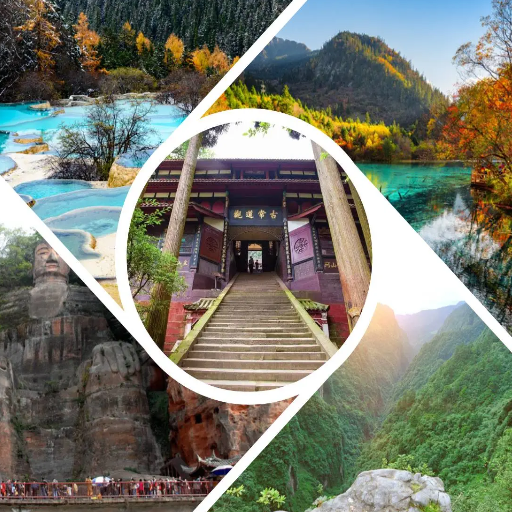
Day Trip to Mount Emei and Emei Scenic Area
One of the sites that can be selected from a day’s tour of Chengdu is Mount Emei, which is a place of significant historical value in China and is part of the UNESCO World Heritage Sites. The mountain lies 150 kilometers away from Chengdu. It is one of the Four Sacred Buddhist Mountains in the country. Emei is a feast for the senses. Culture, Art, Nature, and Spirituality are gastronomic delights ready to bless any traveler from the eclectic world. Emei Scenic Area’s famous temples include ancient temples like Baoguo Temple and the Golden Summit, which provide breathtaking views above clouds ready to enthrall any traveler. Emei is home to lush landscapes, including several walking trails. People can also encounter playful Tibetan macaques. Cable cars to further prominent sights are also available. Hence the Scenic Area is a delight for people of any level of fitness or mobility.
Context and Importance of Jiuzhaigou Valley National Park
Jiuzhaigou Valley National Park encompasses 72,000 hectares of alpine scenery with pristine lakes and multi-tiered waterfalls. The park is home to unique species, including Giant Pandas and Sichuan Golden snub-nosed monkeys. The park is famous for its emerald and turquoise-colored lakes. The park is globally recognized by UNESCO as a heritage site, which explains why it is renowned worldwide. One of the most notable spots in the park, which is scandalous among many, is the Nuorilang Waterfall. The park has wooden shuttles and boardwalks where the users can access different highlights of the park without ruining the delicate ecosystem. Thanks to its dynamic seasonal changes, Jiuzhaigou Valley National Park has been rich in beauty, unlike the other parks, making it an ideal tourist spot.
Explore the Dujiangyan Irrigation System
Located near Chengdu in the Sichuan Province, the Dujiangyan Irrigation System is among the most profound achievements of ancient engineering. It is the oldest functioning irrigation system in the world, constructed in 256 BC during the Qin dynasty by engineer Li Bing. This construction project sought to manage the flow of the Min River so that flooding was mitigated while providing a steady water supply for agriculture. It boldly operates without the need for dams due to the diversion channels and levees which effectively distribute water. It is now a recognized UNESCO World Heritage site and has transformed Chengdu Plain into a sustainable agricultural region, serving as a model of effective water management. Tourists can freely visit, learn about and explore notable components such as the “Fish Mouth Water-Dividing Dam” and the “Bottle-Neck Channel” and appreciate its regional impact on history and culture.
How to Explore Modern Chengdu?
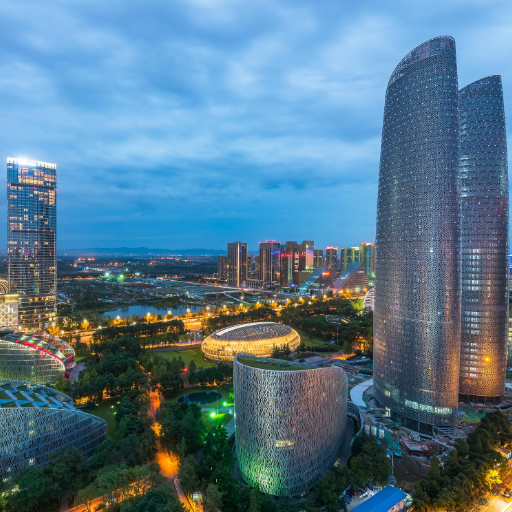
Explore City Center and Tianfu Square
Tianfu Square is the city’s core and represents Chengdu’s modern and historical blend. Famous landmarks like the Sichuan Science and Technology Museum and the Mao Zedong statue towering above create a breathtaking view of the square, a cultural and social hub. While visitors enjoy its beautiful fountains, elaborate light shows, and the hustle and bustle of pedestrians, they can also make use of the square’s many shops, eateries, and skilled artists set up on street stalls. The square also has a metro station entrance, which adds to its busyness while helping Chengdu’s visitors venture quickly throughout the city.
Chengdu Museum Visit
The Chengdu Museum is one of the most important museums in the Chengdu region as it covers the area’s history, art, and culture. Situated a short distance from Tianfu Square, the Chengdu Museum is designed with impressive modern architecture combining grandeur and expansive space for showcasing temporary and permanent exhibitions. Pieces of art on display include relics found in Sichuan, traditional shadow puppets and puppeteer dresses, and even sunglasses made from feathers. The ability to interact with displays, along with the audiovisual touches provided, allows all ages to enjoy the museum. Because of the depth of knowledge offered, the museum is essential for anyone interested in Chengdu’s history and culture.
Visit the Sanxingdui Museum and its Artifacts
The Sanxingdui Museum is renowned for its collection of relics from the enigmatic Sanxingdui civilization. Featuring an archaeological collection, the museum is an acclaimed landmark and relic site, boasting an astounding range of jade pieces, pottery, bronzes, gold masks, intricately crafted artifacts, and sculptures that are over 3,000 years old. The discovery of these relics has revolutionized the views of historians surrounding the initial stages of Chinese civilization and the development of culture within the region. The museum has two main halls, displaying this civilization’s astonishing craftsmanship and culture. This makes the Sanxingdui Museum one of the most critical places for history and archaeology experts.
Reference sources
Frequently Asked Questions (FAQs)
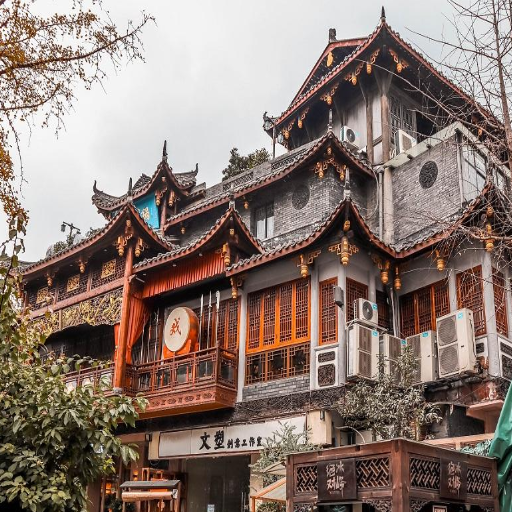
Q: What are the top things for a first-time visitor to Chengdu to do?
A: For a first-time visitor, some of the top things to do in Chengdu include visiting the Chengdu Panda Base to see adorable giant pandas, exploring the historic Jinli Old Street, and taking a peaceful stroll at Wenshu Monastery. Additionally, don’t miss the chance to enjoy delicious Chengdu food and visit the Jinsha Site Museum.
Q: How can I book a Chengdu tour to explore the main attractions?
A: You can book a Chengdu tour through various travel agencies or online platforms. For a comprehensive experience, ensure the tour includes major attractions such as the Chengdu Panda Base, Jinsha Site, and Old Chengdu areas.
Q: What is the best way to experience Chengdu’s food scene?
A: To experience Chengdu food, consider joining a local food tour that takes you through street food markets and restaurants. Trying hot pot and dumplings at popular eateries is a must, as well as sampling snacks in places like Jinli Old Street.
Q: Are there any family-friendly activities in Chengdu?
A: Yes, family-friendly activities in Chengdu include visiting the Chengdu Panda Base to learn about adorable giant pandas and participating in interactive exhibits at the Jinsha Site Museum. Additionally, parks like People’s Park offer a playground and beautiful surroundings for families.
Q: What should I know before traveling to Chengdu’s attractions?
A: Before traveling to Chengdu’s attractions, it’s good to know the opening hours and any entry fees for places like Wenshu Monastery and the Chengdu Panda Base. Also, plan your weekday visits to avoid large crowds, especially in popular spots.
Q: How can I get to downtown Chengdu from Chengdu East Railway Station?
A: To reach downtown Chengdu from Chengdu East Railway Station, you can take the metro or a taxi. The metro offers a convenient and affordable way to travel, while taxis provide a direct option to your destination in the city center.
Q: What are some fun things to do in Old Chengdu?
A: In Old Chengdu, you can explore the traditional architecture, visit local teahouses, and try street food. The vibrant atmosphere of Jinli Old Street offers handicraft shopping, while Wenshu Monastery provides a serene escape for reflection.
Q: Can I volunteer with pandas during my trip to Chengdu?
A: Yes, there are opportunities to volunteer with pandas at the Dujiangyan Panda Base. Programs typically include feeding and caring for the adorable giant pandas, and it’s recommended to book in advance due to limited spots.
Q: Which places in Chengdu should I prioritize for a 2025 itinerary?
A: For a 2025 itinerary, prioritize visiting the Chengdu Panda Base, Jinsha Site Museum, and Wenshu Monastery. Enjoy the local food scene, and explore the vibrant downtown and historic Old Chengdu areas for a well-rounded experience.